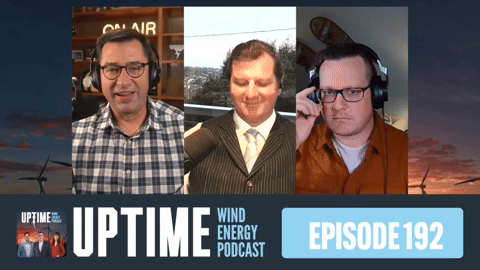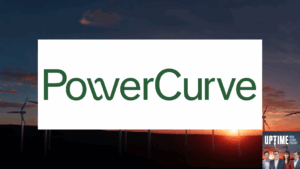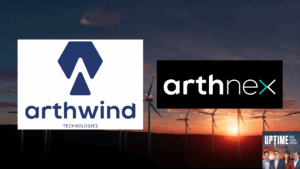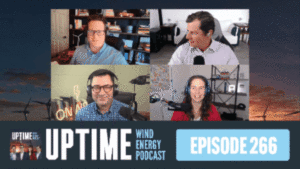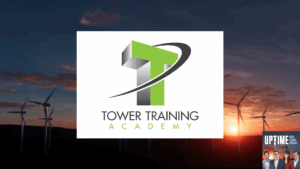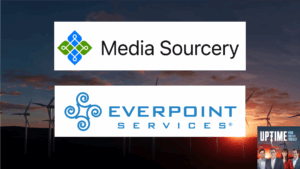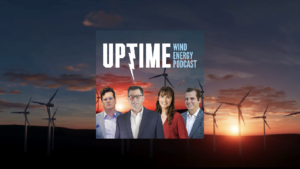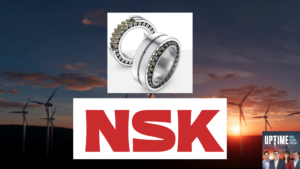Podcast: Play in new window | Download
In this Thanksgiving edition, we reflect on the past year in wind energy. We’re thankful for positive trends like capital changing hands, companies addressing the technician shortage, and growth of our podcast! The Uptime team sincerely appreciates the partnerships, experts, and audience feedback that have made this podcast possible. As we look ahead to next year, we invite you to continue engaging and let us know what topics you want us to cover. And most importantly, we’re thankful that we can keep having insightful discussions about the wind industry!
Sign up now for Uptime Tech News, our weekly email update on all things wind technology. This episode is sponsored by Weather Guard Lightning Tech. Learn more about Weather Guard’s StrikeTape Wind Turbine LPS retrofit. Follow the show on Facebook, YouTube, Twitter, Linkedin and visit Weather Guard on the web. And subscribe to Rosemary Barnes’ YouTube channel here. Have a question we can answer on the show? Email us!
Pardalote Consulting – https://www.pardaloteconsulting.com
Weather Guard Lightning Tech – www.weatherguardwind.com
Intelstor – https://www.intelstor.com
Allen Hall: Welcome to this special Uptime edition during Thanksgiving week. And Phil, Joel, and I, are going to reminisce about the past nine months and what’s been happening for 10 months, 11 months, however long it’s been. I guess we’ve been looking at it 11 months, going to what’s been happening in wind.
I think there’s been a number of changes over the last six weeks that will have implications over the next couple of years. And. I know, Phil, we’ve been all going back and forth about where offshore wind is headed. I want to kick off first by looking back on onshore wind and let’s say something positive here about what has been happening on onshore wind because there has been really good things happening.
Philip Totaro: We’re poised at this point of the year, we’re poised to see, a, potentially a new installation record, in the United States this year, still to be determined whether or not, they’re going to get there by the end of December. But, I think the certainty that has been provided by this extension of the production tax credit through the, Inflation Reduction Act has helped.
The investment tax credit as well, and I think it’s provided, a lot of people, even though they haven’t released the full IRS guidance and everything yet. I think it’s provided a lot of people some certainty. I think you’re gonna see floodgates open when they do finally release this IRS guidance, but based on what everybody’s anticipating, There’s been, a lot of, companies getting back to business.
if you remember this time last year, we were talking about how GE was going to shut down the factory and, everybody was financially insolvent. And, it was just terrible. And, now, things are actually on an upward trajectory. So I think you know, it’s an industry getting back to business and, there’s talk of new factories in the United States.
The super secret Danish project in Colorado, economic, advisory council or whatever, announced. that their, LM was basically a contender for, for a factory potentially there. Yeah, I’m, optimistic about, onshore wind. I’m actually, surprisingly, I’m actually optimistic about offshore wind, because I think we’ve now, at this point, suffered through the last five months of nonsense, and, we actually have, something good on, on the horizon.
Joel Saxum: There’s a couple of… trends that I want to touch on if we’re just talking about trends and things that have happened in the last year. One of them has been the large sums of capital changing hands. A lot of Duke Energy with their big sale of assets and you saw some Algonquin and Liberty Power and some of these other ones.
And I think it was Con Ed got bought up and a lot of money being changed hands. And the reason that money’s changing hands is because companies are basically divesting from older assets, selling them the older. They have a good track record. They’re moving there. They’re, grooving and taking that capital and using it for reinvestment.
So whether it’s building solar or building renewables, looking at some hydrogen projects, there’s a lot of moving and grooving going on a lot of, corporate mergers and acquisitions with these, producing assets. And that capital is being basically reused in the market to build more wind farms and, more renewable generation.
So that’s a trend I think is positive and I’m happy to see that happen. Another one that I’d like to just touch on is we talk about it a lot. The tech problem in the United States and I’m very happy to hear the last few weeks. I know Allen and I have been talking with quite a few ISPs.
And without being prompted for it, a lot of them are talking about what they are doing to try to help solve the tech problem. So while everybody will say, yes, we have one, we have a tech problem. And of course, as, a company, people want to hire the, the, trained and the, the experienced people, the experienced, wind technicians or solar technicians or whoever that may be out there.
But there’s a lot of companies that realize that’s a problem, that we can’t just cannibalize each company back and forth, and we need to add some, new, basically, powder to the mix, right? We need to be training more people, have that, military transition idea to get more, some, of our, servicemen and women once they leave active duty, into the workforce. So a lot of companies that we’ve been talking to on the side and are like, little innovation pieces and stuff like that on Thursday episodes have been talking about what they are all individually doing to try to solve that technician problem.
So it’s nice to hear.
Allen Hall: And sticking with the onshore theme for a minute, our business, Weather Guard Lightning Tech is a small business. And we talk to a lot of other small businesses in wind, mostly outside the United States, couple in some in Canada, right? Our friends up north. And I think in general, one of the things I think has been positive and thankful for is a lot of those businesses have made it through the year that early on the beginning of this year, the first quarter of this year was a little rough for many of them, and they seem to have weathered the storm.
Now, we lost some of the good ones, right? We lost Rope Robotics, which was a little rougher. Pretty sad, actually, but everybody seems to be getting back on their feet, thank goodness, but some of the other players that were teetering seem to have weathered it, and there’s a lot of good technology out there, right?
We saw the merger of Ping and eologix, that was a good sign for the marketplace. We saw, Aerones really go after it this year and, has been doing really some fantastic work on robot designs. Those are all small businesses. Maybe Aerones wouldn’t consider a small business anymore because they’ve grown so much, but there’s still a lot of small ISPs out there, and I think that they’re getting their act together and have weathered the worst part of it.
I agree with Phil. There’s some good upside news that is going to happen. I think once the taxes have all been figured out in the United States, you’re going to see more repowering happening. You’re going to see more new development, particularly in the Midwest. Maybe in places like where Joel is up in Wisconsin, that would be nice to see.
And we’re going to see some transmission build out. So the small companies that really depend on the infrastructure of Onshore Wind to, grow and to develop, are, following, right? So they’re benefiting from some of the things that are happening. And it’s not just United States.
I know we’re all based in the United States, but I see the same thing in Europe too. There’s good stuff happening in Europe at the moment. There’s good things happening in Brazil. Our friends at Arthwind have done a tremendous job over the last 12 months and are growing substantially. And those are really great things to see.
So I always look at the health of an industry by looking at who the small players are that live sort of month to see how they’re doing. Gives you a better sign of where the industry is headed. And I think there’s a good science for that. The remainder of 23 and looking into 24. So let’s talk about some things we’re thankful for, and we can go around the room and highlight them.
I’ll lead off. I am really thankful for some of the partnerships we developed over the last 9, 10, 11 months. We have traveled. all over Europe, it seems like. And we’ve been all over the United States. We were in Canada recently. We’re going to be heading back to Europe by the end of the year.
And, we have met so many great people in wind and we built a lot of great relationships, through those connections and expanded our, our sphere of, what countries we’re touching and, where we have some, be able to give some advice. We’re a lightning protection company and our, thoughts are in demand because lightning is a big problem in the world.
And, I’m really thankful if some of those people have been willing to open the doors to us and welcome us in because we’re Americans. We’re outsiders. We know it, We do not fit the Danish norm in a lot of sense. But yeah, no, we’ve been really appreciative of that.
And I do think the other thing too. We’ve, in terms of, the podcast and what things have happened here, we’ve had so many good guests on. And I know we do take some time, we take time out of their schedule to sit down with us and to talk about what’s happening in their world and to give us some insight and a lot of things you hear obviously on the podcast, but some things that happened behind the scenes that we learned a little bit what’s happening in the world that maybe the world hasn’t, doesn’t have a view on directly.
We’ve, I’m really thankful for that because it really is an education for me is. Being relatively new to this industry, I’ve been in it about 10 years, there’s things I’m learning all the time, the nuances, and Phil’s been really good and giving me insight. Joel, you’ve given me a tremendous amount of insight. Rosemary, just bonks me on the back of the head once in a while and says, Hey, this is how it works.
Those are really interesting and good experience. they’re painful at the time when, it happens. But, I do think, we as a company and, hopefully our listeners have learned a lot over the last a couple of months. I will say, uh, one thing about the people who have come into the podcast, man, they are brings us a wealth of knowledge.
It is people contact us. It’s, and Joel, we’ve been to a lot of trade shows and people come up to us, Joel? And they’ll say when they want to take selfies, which is a little weird. I’m not used to that still, maybe, Joel is. But the thing they’ll say is you guys changed my life. I’m like, whoa, we’re not here to change anybody’s life.
That’s not what this podcast is about. But a lot of, young engineers have changed their pathway into wind and renewable industry because we have offered them a view into what is happening at the sort of the lower levels there. These are what the companies are doing. This is where the industry is headed.
They, it’s really hard to get that information. I think if we can be a conduit for that’s great. I’m not responsible for your decision to enter renewable energy. That’s on, yourself. cause we know how hard it can be. Joel?
Joel Saxum: Absolutely. I’m going to say a piggyback on that as well, Allen.
We talk about having guests on. Not only do we have these kind of conversations with our team here with Phil and Rosemary, Allen and I, Claire, of course, in the background that you can’t see usually, we have amazing conversations off air. With the get with our guests, the, amount of things that are the shared and the opinions and the thoughts.
And when you can just sit around like a couple of people sitting around a table, just, BS. And the amount of knowledge that’s shared. And some of the things like Allen said, you hear on the program come right from, I would recount, like, when we were in Canada, we were sitting around a booth.
Just randomly having a conversation with, some really smart developers and engineers within the space. And they brought a new thought to my eye. We, I was talking about technicians, oh, we don’t have enough capacity to train wind energy technicians. We don’t have enough capacity. There’s not enough community colleges getting people in and this, and then, and the gentleman that was sitting with us said, I would like to see more people that have a broader sense of training, like maybe they’re trained like a millwright, or they’re, they have an electrical background, or they have, they can weld, something like that. That skill gets them in the door, but that skill then doesn’t pigeonhole them into being a wind turbine technician the rest of their life.
So you’ve now, you now have a person that’s a little bit more rounded, that has a little bit more training, and if they want to move on from the wind industry to do something else, they have built a set of skills around what they can do to jump into a different industry and stuff. And it’s man, that’s a good way to look at the, technician problem that we have, is we just need to grab people from a broader. A broader background with broader sets of skills, pair them together, and then we’re not so specifically horse blinded into we need wind turbine technicians. We just need good mechanically inclined people.
Allen Hall: And that discussion really came out of some of the talk we’ve been having on the podcast. And even, Joel, when you gave the description of how you should employ technicians year round, Uh, that was a really good episode.
I, thought that was fantastic. And we’ve heard a lot of comments back from that, and that’s a good place to be, right? I’m really thankful for the comments you received back on that, and how that approach could work. there could be some improvements on it, and The industry is actually talking about that, and that, those ideas get bounced around and they don’t just die, right?
Because we do need some of those things. And I think the wind industry in particular, unlike some of the other industries that I’m familiar with, is very open to change and is very open to making itself better.
Joel Saxum: It’s a young industry. It’s not super mature. Yeah.
Allen Hall: And Phil and I both work in a mature industry.
We both work in aerospace for a while. I still do. it’s a very mature industry and it’s not really open to ideas because things work and they don’t wanna change it. But in wind there’s still a lot to happen here.
Philip Totaro: And I’ll tell you what, Allen looking forward into 2024. I see a lot of potential innovation in things like material science and still more work to be done on kind of data science application, if you will.
So leveraging information, SCADA data, CMS data, et cetera, to actually improve performance. Not everybody’s drinking that Kool Aid, so to speak, yet. and I think it’s starting to happen, though, that companies are starting to get the picture, Hey, you know what? Our operations and maintenance cost doesn’t have to be as high as it is.
Not only is there benchmarking data out there now, And, we’ve seen prices tend to increase and a lot of it’s being driven by OEMs getting very expensive long term service contracts to try and make up for some lost margin. But in reality, the independent service providers that are out there, I’m thankful for them. Because they have actually provided a service where they’re taking over assets that might be 10, 15, whatever years old. And, normally especially in the United States, and it’s part of it’s because of the production tax credit, any piece of industrial equipment, as it ages, you’re going to see a drop off in its performance.
It’s just inevitable that things wear out. But independent service providers oftentimes get involved on projects where they prevent the thing from seeing a more precipitous drop. The asset might, without the ISP being involved, if you went to a self perform and maybe the asset owner or operator doesn’t really have the resources or even care to invest in maintaining that asset, you’re going to see a precipitous drop off in performance.
Particularly after 10 years, again, a lot of that’s driven by production tax credit. But, we’re in a position now where independent service providers have taken over a lot of projects and helped sustain the, asset. And helped sustain the profitability of a lot of those assets by ensuring that, the thing keeps, the turbines keep spinning and the thing keeps producing revenue for the asset owner, even absent the production tax credit after the first 10 years of the life.
if you’re not going to repower, you need to talk to somebody competent and there’s plenty of folks out there who are, but you need to talk to somebody competent about. How to get involved in helping to, maintain your spare parts inventory. How to actually service the turbines, they’ve got experience in, the manufacturer says that you’ve got to do this, that, and the other once a year.
Well, based on experience, maybe we need to inspect, every six months or even more frequently for certain makes and models of products. This is that kind of knowledge base and experience base that a lot of companies have that they’re able to be to bring to the table, but they’ve got to be engaged.
One thing that the wind industry is, in addition to being young and, open to change, etc. We’re also very cost verse, unfortunately. And it’s because at the end of the day, you and I, as. electricity consumers don’t want to really pay more than what we already do. But it’s also a quality thing, you it’s you get what you pay for and just a little bit of investment in, whether it’s an ISP or whatever, any kind of maintenance is better than no maintenance. So you’ve got to make intelligent choices. And I think there’s plenty of good people out there that then that can help.
Allen Hall: Joel, I think, a lot has happened over the, even the last two months, right? You’ve taken a new position with us, which we are super thankful for. And, we have seen a market increase in sales and productivity on our side, just by having you join the company.
So we’re super thankful about that. And, we are, if everybody doesn’t know, I know we seem like a big conglomerate, but we’re just a handful of people, doing a lot of hard work day and night. And this podcast is one of those outlets where we get to talk about, show the ins and outs of that business and the ins and outs of the industry, right?
And I would say that, having Joel involved with us has been a real bonus for us. Having Phil join the podcast on a more regular basis has been a really good bonus because he is so insightful in all the things at Intelstor. And even though Rosemary is not here, at the moment, we like having Rosemary here.
She provides a lot of great engineering insight and opinion. Very opinionated, which I like. And she, but she’s super knowledgeable, right? And she keeps up on all the stuff that I don’t have the time to keep up on. Some of these crazy wind projects that are happening, or some of the solar things, or electrolyzers. And the hydrogen, and the green hydrogen, and blue hydrogen. Yeah, I think between the… and having Claire as our producer, why, that’s just a miracle, quite honestly. Between the five of us, we’ve been able to pull off this podcast. And I will say, Joel, and we have seen a rapid increase in the number of YouTube subscribers, we’re up to 275, 000 subscribers on YouTube for this crazy little podcast, and we’ve crossed 200,000 downloads on the audio platforms. The number of people listening every week has really gone up a lot since we hit the, the winds, conference tour this summer. Man, it’s just been explosive levels of growth. And really, I’m one person, I can’t do all this stuff. What makes this podcast interesting, in my opinion, is a variety of voices.
Everybody comes in with a certain expertise. But is willing to mix it up and to go at it about the subjects that matter. And that’s what makes us different. We’re not talking about policy. And Phil, we’re not talking about policy every week. I just don’t care what’s happening at some conference.
Where they’re all flying in on the Gulfstreams. That’s not my thing.
Philip Totaro: Allen, just ask me about the Jones Act, though. then I’ll really go off on it.
Allen Hall: So the, but the thing is, that we are able to talk about, hopefully, more sort of ground level issues. What is impacting technicians and engineers and operators and…
The OEMs and, talk about what is happening in the industry, not what’s happening at the government level. And hopefully that’s where the podcast will remain, over the next year. I’m expecting to see more growth and we’re going to be traveling a lot. Our, Joel, we’re going to so many places over the next couple of months.
it’s going to be astounding. I’m not going to be home for probably two or three months out of the year.
Joel Saxum: We’ll be talking about all that stuff on LinkedIn too. So if you’re wondering where we’re going to be or anything like that, or if you’re, you know what, if you’re, if you listen to the podcast and Hey, we’re going to go to Amsterdam and you think there’s something cool there that we should check out, drop us a note on LinkedIn, send us an email.
We put our contact information all over everything we do, so LinkedIn, the Weatherguard Lightning Tech website, which is weatherguardwind. com. We’re, contact us through there, uptime@wglightning.com. We’re always looking for feedback, from all these, from anybody that listens, hey, you guys said something wrong here. You said something right here. Phil is the best dressed on the show, whatever it may be. Send us some feedback, tell us what we’re doing well, tell us what we’re doing bad, or things that we should include, and chat about, that, that are, topics that the industry cares about. Topics that technicians care about. We want to, we do this podcast, not so much to, to be out there, but to provide a service for the industry, really.
Allen Hall: Yeah, we don’t like listening to our own voices. We want to hear your voice, through us. That’s what we want to do. and. to, to some discussion out there because it does move the industry forward. And we know that a lot of the companies we’ve had on the podcast have had a lot of feedback, that they’ve, brought in some new customers.
They’ve connected with people they haven’t been connected to before. That is the goal of the podcast. We don’t sell anything on this podcast. I guess we kind of market our Weather Guard products, but …
Joel Saxum: We gotta eat.
Allen Hall: Yeah, we gotta eat a little bit, right? Food is still important, but we’re, doing it as a service to the community.
And maybe at some point we, will start to advertise. Maybe we’ll get big enough we’re, you know that’ll happen, but that’s not today. And I do think, our, reach out into the world has been substantial. And I want to mention one more that comes to top of mind, PES Wind Magazine.
All right. So everybody at PES Wind has been kind enough to let us write an article for their quarterly magazine and to get that out into the world. So we have been doing that every quarter. And it’s been actually a tremendous amount of work goes into those, articles. PES Wind, I appreciate everything they’ve done for us over the last several months.
Hopefully we’ve garnered them some more eyeballs to the magazine. And we’ve, introduced a lot of people to some subjects in lightning they may not have heard of before, and they may be… Got a little bit out of it, right? But I will say, working with PES Wind, they are phenomenal to work with.
I’ve worked with other magazines in the past and it’s not been as smooth or as well done. And that crew worked really hard to produce that magazine. And I know if you’ve read it, you realize the effort that goes into it. So I do want to say a shout out to them and appreciate the partnership we’ve had with them over the last several months. It’s, I think it’s been tremendous.
Joel Saxum: So we’re nearing the end of the special Thanksgiving, US Thanksgiving. That’s maybe why Rosemary isn’t here. but this, end of the special episode of the Uptime Wind Energy Podcast. And again, we want to thank all of the listeners and the YouTube watchers and the, the people that are commenting on the LinkedIn posts. And, all the engagement from, those out there that we’re making the podcast for that you guys are listening, and sharing the feedback.
So thanks again, guys. We’ll be another year until we do an episode like this and, we hope you’re still listening at that point.



